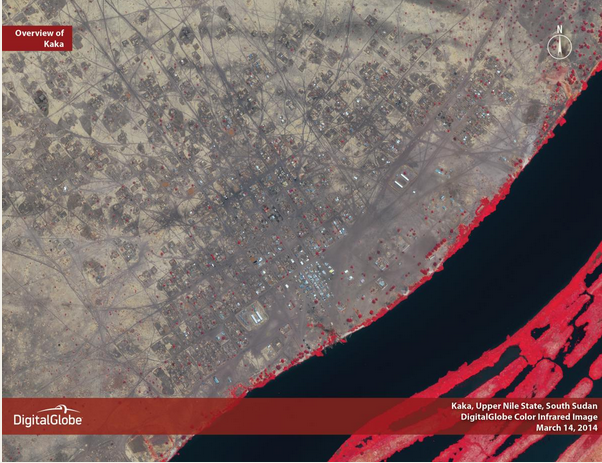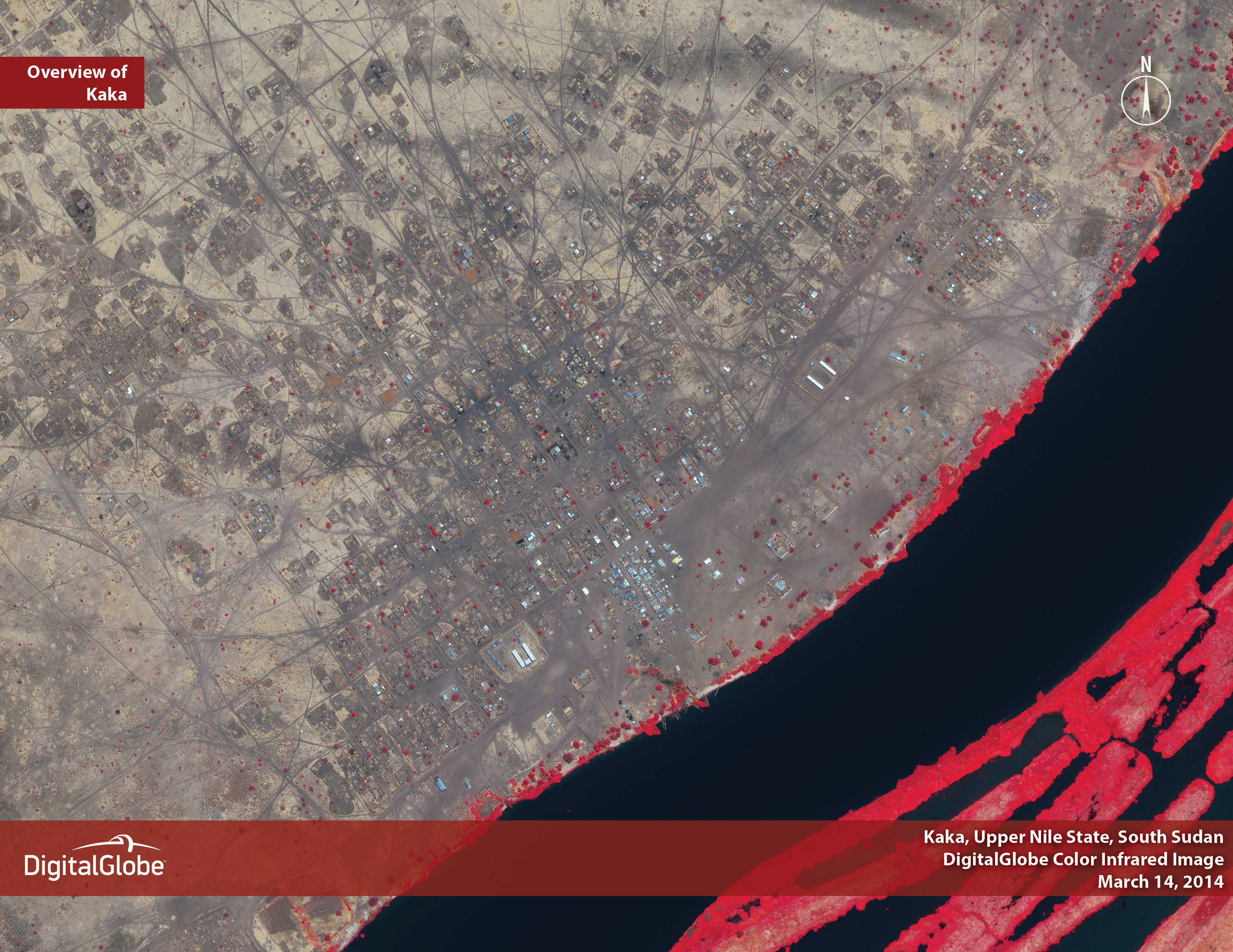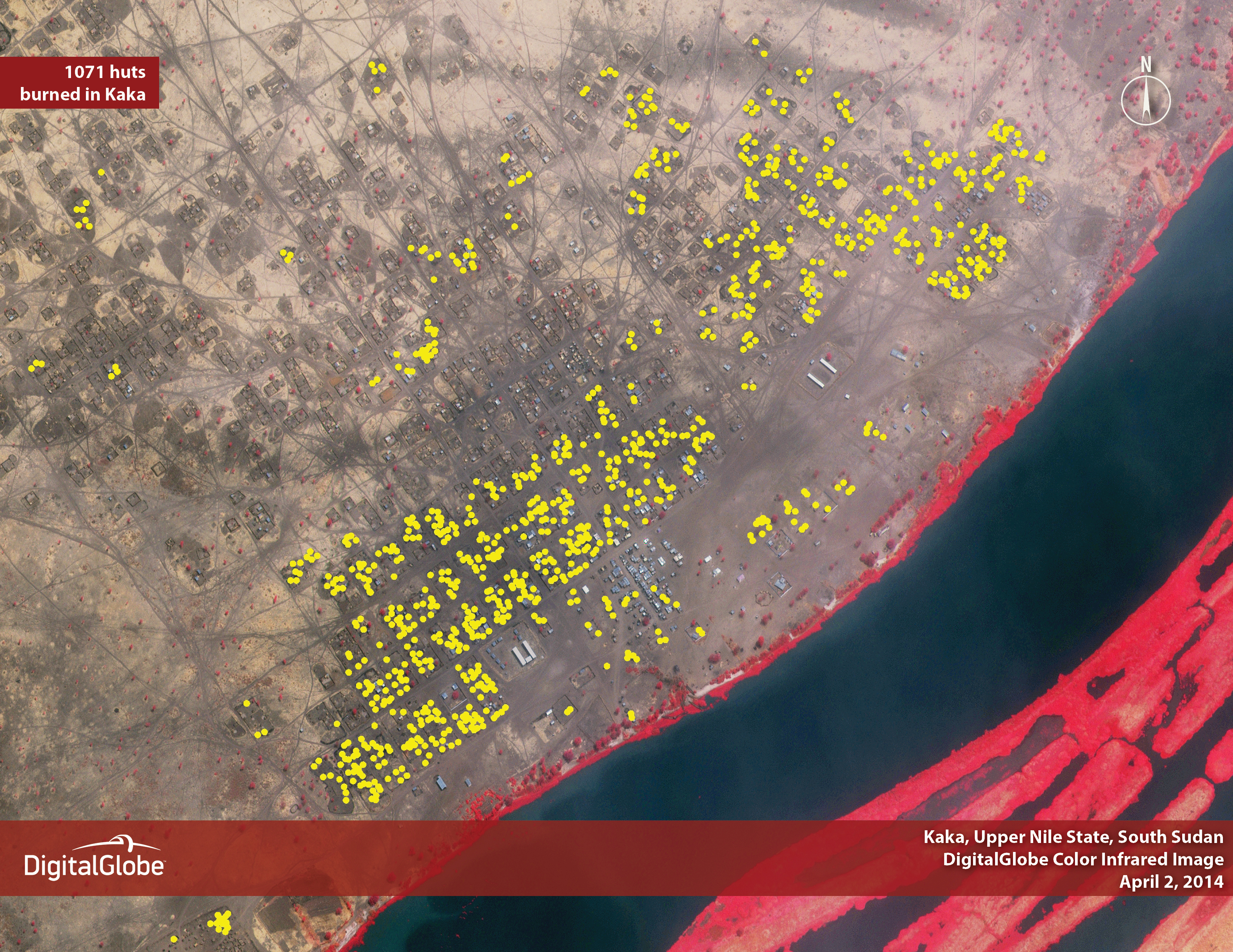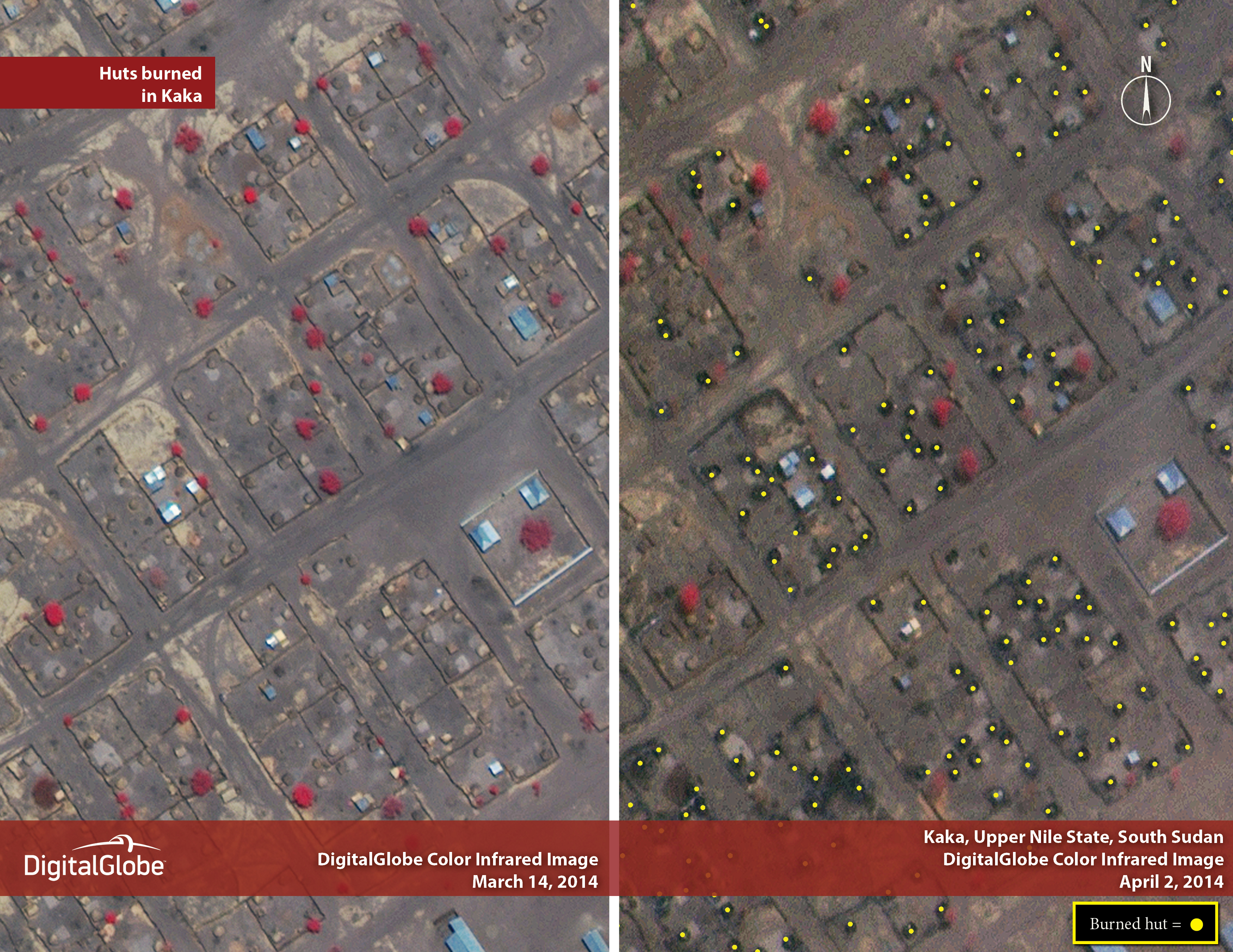
New Satellite Sentinel Project (SSP) imagery of the strategic town of Kaka in South Sudan’s Upper Nile state confirms the burning of 1071 huts and tukuls and some limited damage to the central market. The 1071 structures were burned in Kaka between March 14 and April 2, 2014, when the new images were secured. The town, which lies on the road to South Sudan’s only productive oilfields in Paloch or Palouge, was attacked as recently as four to five days ago. South Sudanese armed opposition leader Riek Machar recently announced that his forces are seeking to control the Paloch oilfields, which currently produce around 150,000 barrels a day, worth around $15 million dollars. An attack is likely imminent.

Preliminary DigitalGlobe Intelligence Solutions (DGIS) analysis of the nearby oilfields does not appear to indicate any damage to the oilfield infrastructure. Kaka has been a flashpoint for fighting between the rebels and the Sudan People's Liberation Army (SPLA), including the White Army and forces formerly loyal to Shilluk rebel commander Johnson Olony as part of the South Sudan Democratic Movement/Army (SSDM/A). Kaka is located on the western bank of the White Nile in the northern-most county of Manyo – an area that is ethnically Shilluk and easily controlled because it is geographically remote.

Kaka is currently under the control of rebel forces, according to the SPLA, and it was recaptured by opposition forces around March 24. There has been fighting in the town as recently as one week ago, and much more recently in nearby Tunga and Wadakona towns. The area is an active front line between the SPLA and the rebel forces, including over 1,000 SPLA Division 7 fighters that defected from the national army under the command of General Gathoth Gatkuoth and White Army fighters from nearby areas in Upper Nile. Forces formerly loyal to Olony’s SSDM/A have also defected under the command of Ayok Ogat, Olony’s former deputy.

Olony had previously accepted a peace deal with the government in June 2013 as part of the April amnesty deal offered to all of the main rebel leaders in South Sudan by President Kiir. Throughout the recent conflict, Olony has remained loyal to the government, and forces under his command helped SPLA forces recapture Malakal on December 27. The split in the SSDM/A between Olony and Ogat reflects the long list of grievances the Shilluk community have with the government, including a violent disarmament campaign in 2010 and a longstanding land dispute over three contested areas with the Dinka people in Upper Nile. There have been reports of targeted violence against the Shilluk in Malakal for Olony’s support of the SPLA.
According to Small Arms Survey, since the end of February 2014, the advance of rebel forces has become more dispersed. On the western bank of the Nile, limited clashes in Manyo county, including Kaka and Wadakona, led to a rebel occupation of the area around January 18. On January 24, the government recaptured Kaka town. Nonetheless, clashes have been ongoing since then with conflicting reports emerging from either side.
The Satellite Sentinel Project will continue to carefully monitor the situation in Kaka, as well as the Paloch oilfields, which are a strategic priority for Riek Machar and his opposition forces in order to strengthen their position in advance of negotiations, which were suspended on March 31 and are set to resume on April 30.
Photo: Overview of Kaka, South Sudan(Satellite Sentinel Project/DigitalGlobe)

